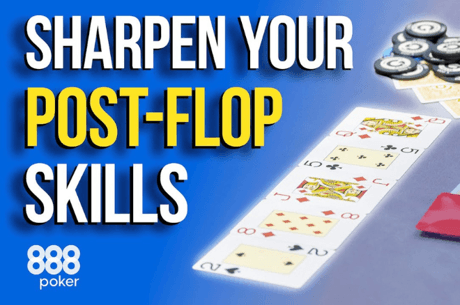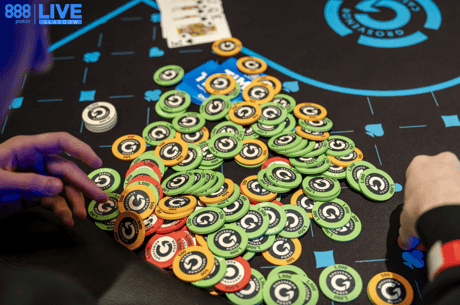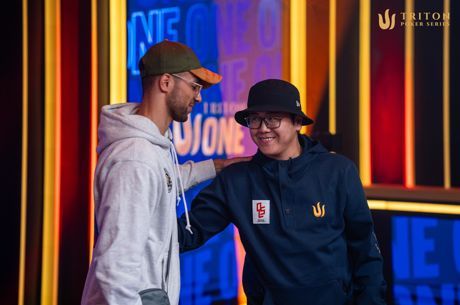Counting the Combos: An Exercise in Range Narrowing

Sometimes in no-limit hold'em, it will be less likely for your opponent to show up with a weaker hand than with a stronger one, even if both would have been played the same way. How is that possible? The answer lies in counting the combinations. The following hand is an illustrative example.
The Range of a Cold Call
It was an online game of six-handed 100NL ($0.50/$1). A nondescript regular with $101 to start opened to $2.50 from the cutoff, another regular with just over $150 called from the button, and a very deep-stacked professional who covered them both called from the big blind.
The flop came K♠7♦4♦. The big blind checked and the initial raiser continuation bet $3, something to be expected on this relatively dry, disconnected flop.
This is where the action deviated from the norm. The button raised to $10, a move representing a made hand like a set of sevens or fours. Then the big blind, not deterred by the increasing price of poker, decided to cold-call the raise.
While the button could have just about anything — he could be bluffing with J♥10♥, for all we know — the big blind's call of the raise more particularly signals a strong range. Even weak flush draws like 10♦9♦ may find it hard to continue by calling here. After all, the initial raiser can still reopen the action.
Because the big blind simply defended before the flop, hands like K-7-offsuit, K-4, and even 7-4-suited could all be possible. The big blind certainly has the most diverse possible range given the preflop action, and because of the flop action he is unlikely to have a weak draw or weak made hand.
Possibilities and Impossibilities
The initial raiser folded and the two players saw the turn heads-up. That's when the most interesting card in the deck, the A♦, showed up. The action did not explode, however. The big blind checked, the button bet $15, and the big blind called. Still, $130 lay behind in the stacks.
While the A♦ made the nut flush draw impossible for both players, it did not completely eliminate the chances someone held a flush. The card made it much more difficult for the button to hold a flush, since most of the flush draws he could have flatted with preflop were suited aces. On the flop, only hands like K♦J♦, K♦Q♦, J♦10♦, or 6♦5♦ were now possible for the button.
The same, however, cannot be said for the big blind. Remember, the big blind only called preflop for a cheap price. He could hold just about any two diamonds, including 5♦3♦, but also top-pair hands with diamonds, like K♦8♦.
Just counting the suited diamond kings the big blind could have — K♦Q♦, K♦J♦, K♦10♦, K♦9♦, K♦8♦, K♦6♦, K♦5♦, K♦3♦, K♦2♦ — comes up with nine combinations. And all of those would have the nuts on this turn card.
Check-Raise Shoving the River
All of this would become immediately relevant, because after the 5♣ river the big blind checked for a third time, the button bet $24, and the big blind moved all in for about $105 more. This is a sizeable raise.
Let's consider again the big blind's range to call the flop — K-7, K-4, 7-4-suited, K♦X♦, and strong flush draws like 6♦5♦ and A♦8♦. Hands like 4-4 or 7-7 are both also possible, though arguably the big blind could have three-bet those hands the flop some amount of the time.
The few hands that did not make a flush on the river such as K-7, K-4, 7-4, and 4-4 are certainly bluff catchers and not very good bluffs. K♦7x and K♦4x do block the nuts, and therefore might make ideal bluffs if the big blind feels he is not strong enough to call down in this spot.
Bluffing with two-pair hands seems nuts, especially since those hands block sets. A stubborn flop call like K♦Q♣ seems like the ideal check-raise all-in here, since it is far weaker as a bluff catcher, and could have check-called the turn with the nut flush draw.
In any event, the button decided to call the shove with 7♣7♠. He might have told himself, for example, that he beat 4-4. But really, 4-4, even if played this way, is only 3 combinations. That's 3 combinations versus nine combinations of the nuts. Consider other flush draws, too, like Q♦J♦, 6♦5♦, or 8♦6♦. In other words, the stronger hands — flushes — are more likely to be in the big blind's hand.
It would seem like the button's obvious play was to bet-fold the river for value. He is simply beat too often. As was the case here, as the big blind turned over K♦2♦ (see below).










